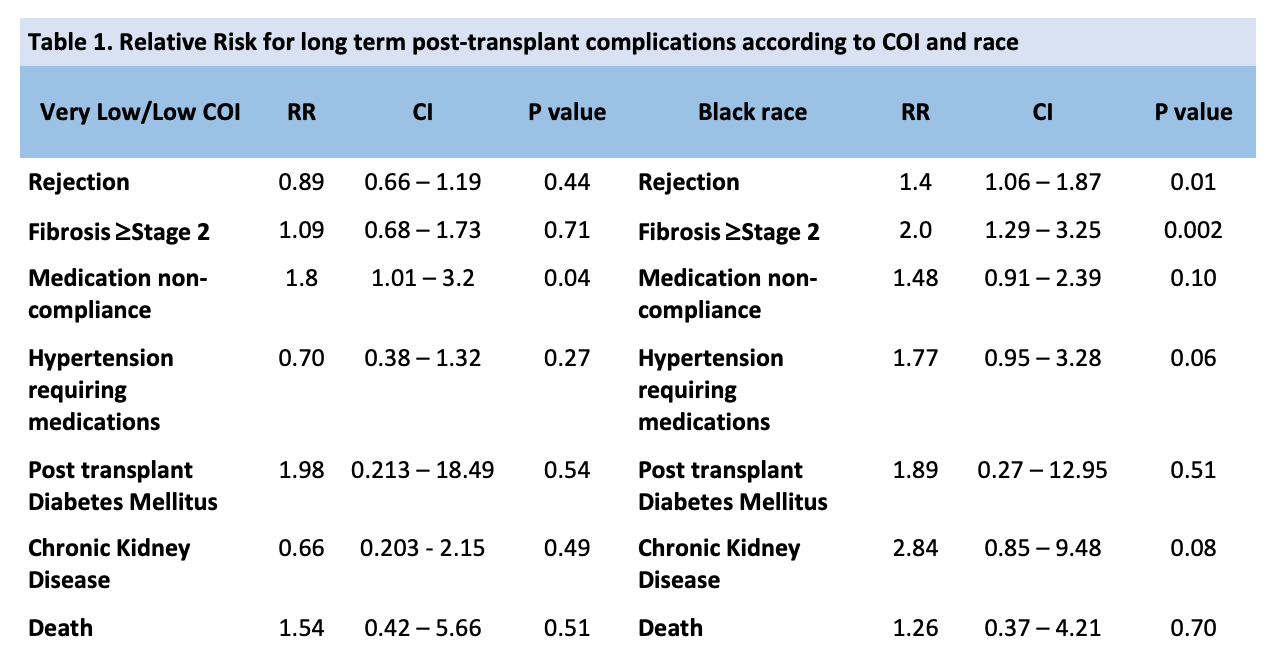The association of race and the Child Opportunity Index with health outcomes in pediatric liver transplant
Claudia Riera Canales1, Montserrat A Corbera-Hincapie1, Mark Hincapie2, Jessica T Hochberg4, Jennifer Garcia4, Amber H Langshaw1, Taisa J Kohut3.
1Pediatric Gastroenterology, Hepatology and Nutrition, University of Miami, Miami, FL, United States; 2Nicklaus Children's Hospital, Miami, FL, United States; 3Pediatric Transplant Hepatology, Advent Health Orlando, Orlando, FL, United States; 4Pediatric Transplant Hepatology, Miami Transplant Institute, Miami, FL, United States
Introduction:
Race and lower socioeconomic status are risk factors for poor outcomes in pediatric liver transplant.1,2 The Child Opportunity Index (COI) assesses neighborhood conditions essential for child development. Low COI is associated with increased healthcare utilization and morbidity but remains understudied in transplant populations.3,4 Our aim was to determine the association between COI and race with pediatric liver transplant outcomes.
Methods:
This is a retrospective, observational study of children under 18 years of age, receiving a first-time liver transplant at Jackson Memorial Hospital between June 2013 to May 2023, followed-up through June 2024. Demographics and outcomes were analyzed with COI categorized into very low/low versus moderate/high/very high. Relative Risks (RRs) were calculated for outcomes according to COI and race.
Results:
The study included 113 patients, of which 60% had a very low/low COI; 34% were black, and 30% were Latino. RRs were significant for non-compliance in lower COI groups, and allograft rejection and hepatic fibrosis in black patients. 
Conclusion:
The majority of our patients had very low/low COI, including 77% of black patients. Except for non-compliance, our study did not detect an association between COI and outcomes of interest; however, black race was associated with allograft rejection and hepatic fibrosis. Our findings suggest that COI does not account for all socioeconomic factors influencing outcomes in pediatric liver transplant recipients. Worse outcomes seen in black patients may have resulted from structural barriers not accounted for with COI. Further research is needed to provide targeted interventions addressing disparities following liver transplantation.
The WebApp is sponsored by:

If you have any questions during the meeting, please go to the registration desk. Our emails will be monitored sporadically.
REGISTRATION DESK OPENING TIMES
Thursday, May 1, 2025, 07:00-17:30 Friday, May 2, 2025, 07:00-12:00